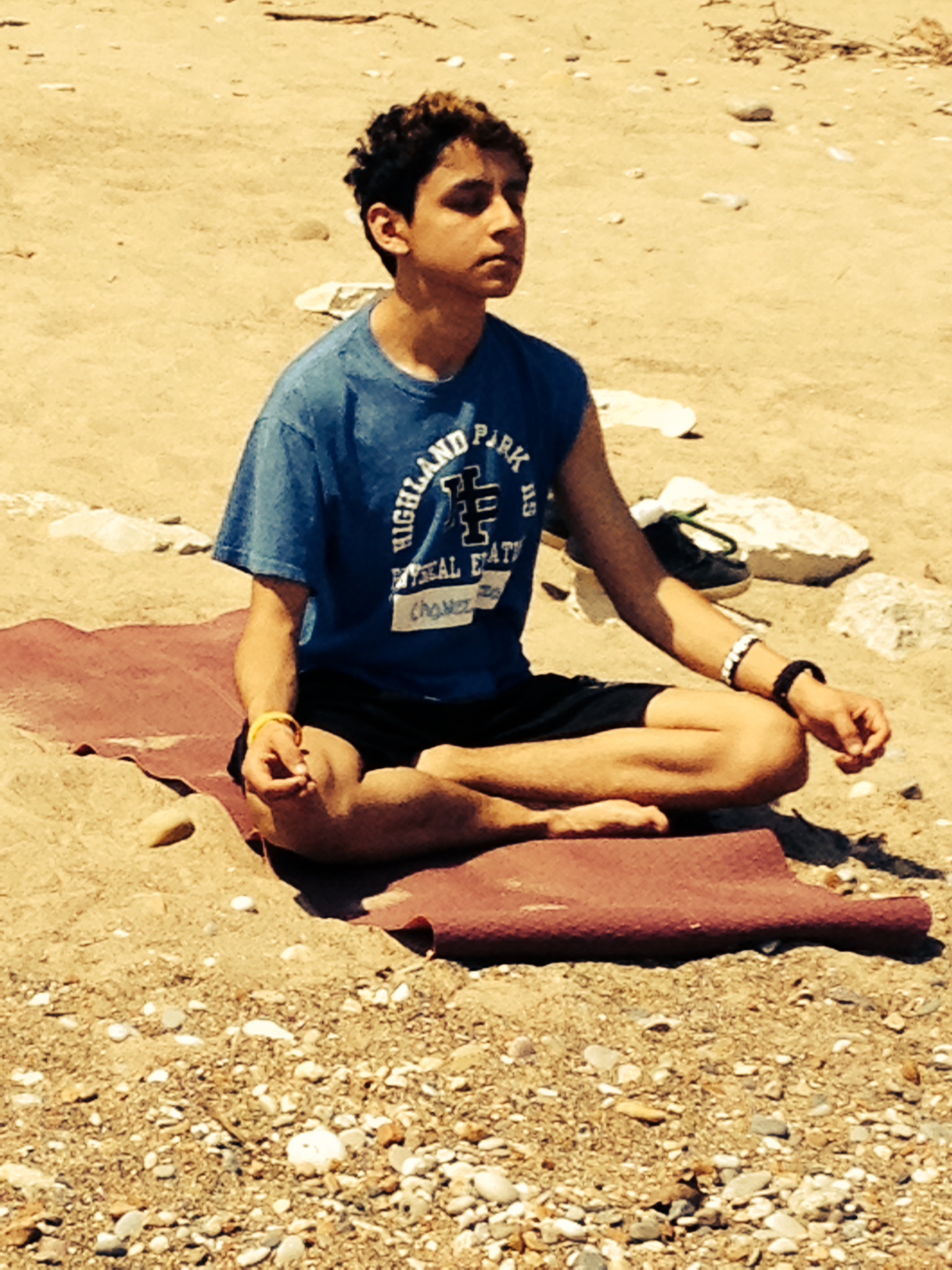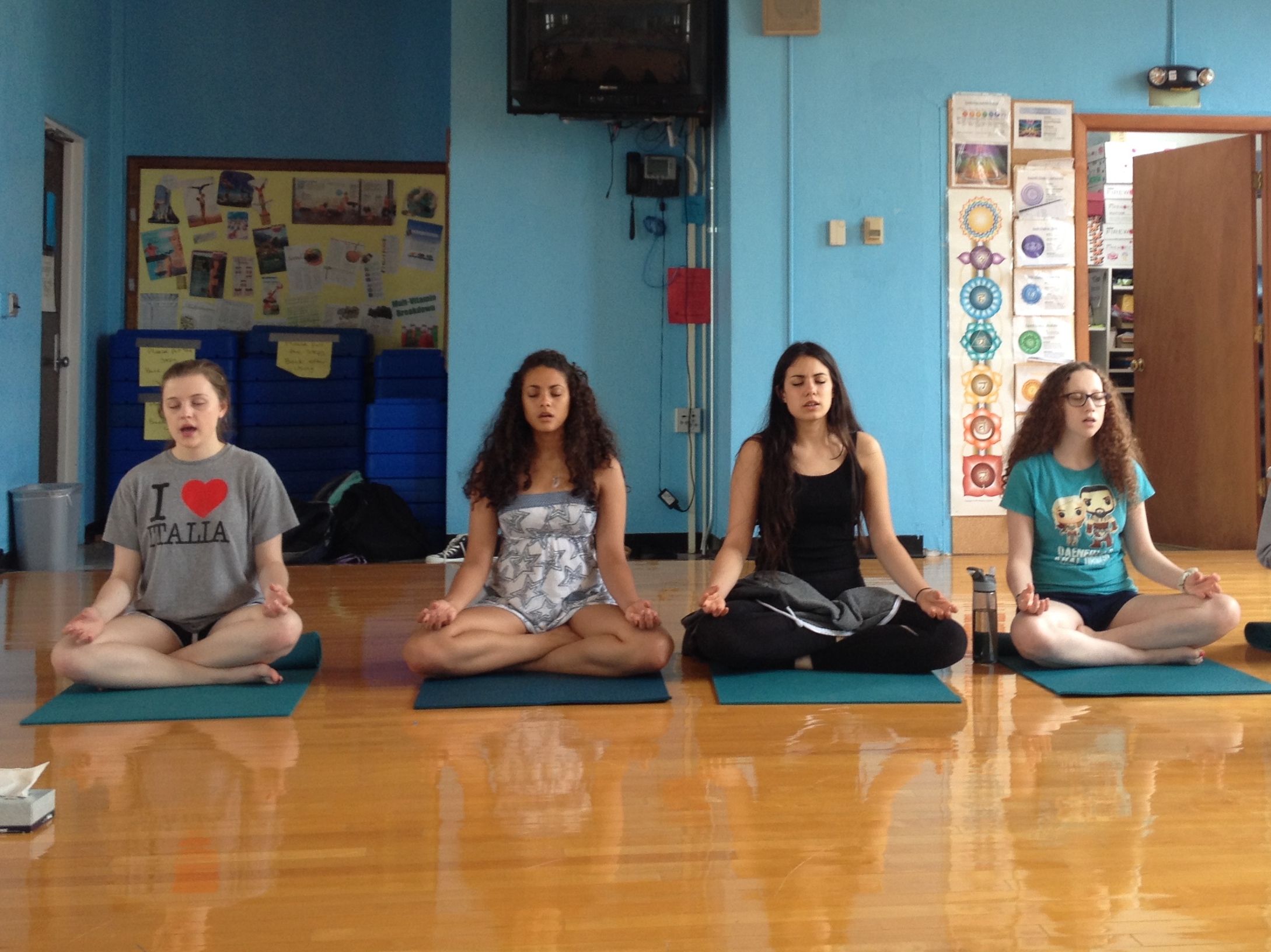We are a Culture in Crisis: How PE can Begin Changing the Next Generation?Victoria Otto, Highland Park High School
 Ready or not, here it comes! New teacher evaluations, high stakes student assessments, and common core standards have been implemented whether educators are ready or willing. While most teachers out there are plenty able, the real question is whether or not we have the ability to find the time to figure out how to implement the new content, collect enough evidence, differentiate various artifacts, and decipher between SLOs, GLEs, EALRS, EOCs, CBAs, and any other acronym I may have missed! These days it seems as though there is so much more to learn and do ourselves we may actually forget our true task at hand - teaching. Honestly, when do you have the time to stop, collaborate, and listen? Wait, I mean to collaborate, collect, plan, assess, communicate, and analyze? What time is left for the actual teaching itself? Ready or not, here it comes! New teacher evaluations, high stakes student assessments, and common core standards have been implemented whether educators are ready or willing. While most teachers out there are plenty able, the real question is whether or not we have the ability to find the time to figure out how to implement the new content, collect enough evidence, differentiate various artifacts, and decipher between SLOs, GLEs, EALRS, EOCs, CBAs, and any other acronym I may have missed! These days it seems as though there is so much more to learn and do ourselves we may actually forget our true task at hand - teaching. Honestly, when do you have the time to stop, collaborate, and listen? Wait, I mean to collaborate, collect, plan, assess, communicate, and analyze? What time is left for the actual teaching itself?
Teens across the country are feeling extremely high levels of stress with some studies reporting this is the most stressed
generation. Stressors include school, friends, work, extra-curricular activities and family. And stress continues to show up in studies as an underlying
cause of many diseases. So what can physical and health educators do to help this generation of youth? The most obvious, which we know well, is to get our
students involved in vigorous exercise, particularly cardiovascular exercise. Below is a short list of the benefits of exercise:
▸ Builds BRAIN cells
▸ Increased mental acuity/focus
▸ Increases efficiency of heart and lungs
▸ Reduced cholesterol/Blood pressure
▸ Increased muscle strength/endurance
▸ Improves weight management
▸ Improved self-image
▸ Improved quality of sleep
▸ Improved ability to cope with stress
▸ Improved mood
But what happens when our students leave our classes and head back to the rest of their day? Although exercise has positive and long lasting effects how
can we help our students with chronic and acute stress when exercise isn't an option?

The answer is simple but often overlooked. In fact, it's estimated that 1/3 of our society doesn't do it properly. Although we can last for months without
food, days without water, but without breathing our survival is just a few minutes. Breathing is something we all do yet very few of us do it consciously.
The cool thing is when we bring conscious thought to our breathing and focus on it, breathing can completely change our stress level and our academic and
physical performance. Fortunately, both active and immobile students can learn breathing techniques that can improve their health.
In my physical education classes, we concentrate on physical movements first then begin incorporating how to breathe into the activity. We take time each
week to focus specifically on breathing techniques the students can do anywhere, anytime. The techniques are unobtrusive to others and most people don't
know my students are practicing right in front of them. As the school year progresses, students begin to openly share their experiences with the yoga class
and their families. My students have taken ownership over their breathing practice and their excitement spills over into other classes.

Last year, one of the science teachers noticed one of my yoga students would always "pause" before taking her test. The teacher inquired and the student
told him she was practicing a breathing technique to calm her down before taking the test. Later in the day, we had a long discussion about breathing and
brain chemistry. Soon after, our student was leading her classmates through a 3-minute breathing exercise before tests in this class! My student was
excited to share and lead and the science teacher was impressed with the focus and calm of his classroom.
 As the students become familiar with the different forms of breathing, teachers can begin to incorporate the anatomy and physiology behind the different
systems of the body. This helps students stay focused and gives teachers another way to delivery academic information. Repeating the examples over time
helps retention. By the end of the year, students can remember, understand, and apply critical thinking for deeper levels of anatomy and physiology. They
are moving and thinking, creating a neurological connection between the information and breath work. Below are two examples of how I share information with
my students:
As the students become familiar with the different forms of breathing, teachers can begin to incorporate the anatomy and physiology behind the different
systems of the body. This helps students stay focused and gives teachers another way to delivery academic information. Repeating the examples over time
helps retention. By the end of the year, students can remember, understand, and apply critical thinking for deeper levels of anatomy and physiology. They
are moving and thinking, creating a neurological connection between the information and breath work. Below are two examples of how I share information with
my students:
Example 1: Every cell needs oxygen to function. The cells don't store oxygen, only getting enough to stay alive. We know diseases involving reduced lung
capacity cause psychological distress in part due to a lack of oxygen. In the alveolar sacs where the gas exchange occurs, carbon dioxide is pushed out and
oxygen delivered to the red blood cells (RBC) then into the bloodstream where it begins its journey around the body.
Example 2: In the brain the neurons have a high rate of metabolism, thus using a great deal of oxygen compared to other organs. The more oxygen available
for all the cells of the body, the better the nourishment and waste disposal. Without oxygen, cells cannot metabolize nutrients or eliminate wastes
properly, thus, slowing growth and development and setting the stage for disease.
What are the Benefits to Conscious Breathing?
Deep conscious breath activates the parasympathetic nervous system versus the sympathetic nervous system. When practiced consciously, the mind:
▸ decreases self-talk
▸ increases neuron functioning
▸ improves concentration
▸ improves clarity of thought
▸ increases ability to deal with complex situations
▸ better controls emotions
▸ reduces physical tension
▸ improves coordination, and
▸ helps balance the hemispheres of the brain
Focusing on conscious breathing, the nervous system begins to tone itself like a muscle responding to exercise. By teaching our students to focus on
conscious breathing we give them tools to use when dealing with stress. My students have found breathing techniques to be extremely useful in their
academic classes, public speaking, test taking (especially the SAT and ACT), and dealing with family and friend situations, etc. As physical educators, we
have a great opportunity to incorporate breathing work into our classes, giving our students advantages such as the ability to control their stress, and
make better and healthier choices for themselves and those around them. And yes, sometimes even we teachers need to take a "time out" and just breathe.
Breathing Basics: What Happens and How Breathing Affects the Body
Listed below are some of the changes that take place:
--The lungs cradle and cushion the heart
--Breathing creates a rhythmic movement of the spine and pumps the cerebrospinal fluid
--Movement of the diaphragm helps pump the lymphatic fluid and massages the abdominal organs
--Controlling the breath can alter the heart rate
--Proper breathing provides waste removal and oxygen for cells throughout the body
--Gasses pass across the alveolar cell membrane. The alveoli and the blood entering the lungs exchange carbon dioxide and oxygen.
--Diaphragm moves down to draw air into the lungs
--Controlling the breath can alter brain waves
--Neurons in the brain have a high rate of metabolism and need Oxygen (and glucose) to function properly
--The brain benefits from a richer supply of oxygen
--Rapid and erratic breath associated with sickness is reduced
How to Begin?
You can do teach breathing taking as little as 3-minutes of your class period, and on those days where the school is on shorten periods or odd schedules,
or when unexpected fire and weather drills cut lessons short. This is one of those take out anytime lessons that keeps the students on task and focused on
a different aspects of wellness. Below are three basic breathing techniques to start better breathing for you and your students.
Beginner: Begin with 3-Part Breath (Long Deep Breath)
Three-Part Breathing
1. The diaphragm causes the abdomen to expand, filling the lower lungs
2. The intercostal muscles expand the rib cage and fill the middle lungs
3. The clavicles lift, bringing air into the top part of the lungs
Inhalation
Proper breathing is governed primarily by the movement of the diaphragm. As it descends, the abdomen expands, drawing fresh air in through the nose,
through the trachea and bronchial tubes, and into the countless small air sacs inside the lungs.
Exhalation
Yogic breathing places great importance on the exhalation. As the diaphragm rises, the stale air is pushed out of the lungs with the help of the
intercostal muscles, expelling various waste products from the body and counteracting the effects of pollution.
Intermediate
Counting Breathing
(Combine with 3-part\Long Deep Breath)
This form of breathing is the first step for yoga practitioners use to begin concentration on their breath. It is simple. The instructor starts the series
as follows:
Breath in 1-2-3-4, exhale 1-2-3-4 (do this cycle 4 times)
Inhale 1-2-3-4-5-6, exhale 1-2-3-4-5-6 (4x's)
Inhale 1-2-3-4-5-6, hold 1-2-3-4-5-6, exhale 1-2-3-4-5-6, hold 1-2-3-4-5-6 (4x's)
Inhale 1-2-3-4-5-6-7-8, hold 1-2-3-4-5-6-7-8, exhale 1-2-3-4-5-6-7-8, hold 1-2-3-4-5-6-7-8 (4x's)
Advanced
Ujjayi Pranayama
Ujjayi means to gain mastery or to become victorious
Pranayama
is the yogic science of breath
This form of breathing is called the ocean sounding breath because you make an ocean sound by contracting the glottis (back of the throat) with the
inhalation and exhalation. This pranayama is done through the nose, but it is helpful to begin practicing breathing thought the mouth.
--To make the ocean sound, whisper the syllable "h" feeling the contraction in your throat.
--Keep this contraction engaged on the inhalation and exhalation.
--After a couple of breaths try to close the mouth, breathing though the nose while still making the ocean sound in your throat.
Benefits of Ujjayi Breath
--improves focus and concentration
--increases duration of postures (creates a mind/body connection)
--quiets the mind sometimes called "Monkey Mind" (rumination)
--releases tension in different areas of the body allowing a practitioner to go deeper into the posture (surrendering/releasing the ego)
--creates a level of awareness
--can be used to increase body temperature
--removes toxins from the cells as oxygen is delivered (cleansing)
--decreases headaches and sinus pressure
--strengthens the nervous and digestive systems
Novice:
Practice Ujjayi breath in easy pose (sitting on glutes with legs zig-sagged; cross-legged but without crossing the ankle joints)
Seasoned:
Introduce Ujjayi in mastered poses (asanas). It should come naturally as the pose is more deeply understood
Expert:
Ujjayi will come naturally in more advanced poses are mastered. Ujjayi emphasizes the connection between the breath and the posture; moving the breath and
the posture at the same time. Work towards completing a full flow series with Ujjayi breath
References
American Psychological Association. (2012). Journal Clinical Psychological Science.
Khalsa , D.S., Stauth, C., & Borysenk, J. (2002) Meditation as medicine: Activate the power of your natural healing force. Atria Books: NY.
Kraftsow, G (1999). Yoga for wellness: Healing with the timeless teachings of Viniyoga. Penguin Books: New York.
Levin-Gervasi. (1999). Smart guide to yoga. Wiley: New Jersey.
Long, R., & Macivor, C. (2009). The key muscles of yoga: Scientific keys, volume 1. BandhaYoga: New York.
Sivananda Yoga Vedanta Center. (2008). Yoga: mind and body. Dorling Kindersley Publishers Ltd: New York.
Victoria Otto is the 2011 IAHPERD Secondary PE Teacher of the Year (TOY) and the 2012 Midwest District Secondary PE TOY. Finishing her 14th year at
Highland Park High School, she creates a classroom for students to focus on developing conscious living skills. Blending pure science with fun, giving the
students a great workout, and inspiring individual empowerment, each student leaves feeling uplifted and with an "I can do it" attitude.
Victoria has a BS in Physical Education/Exercise Science from University of Wisconsin-La Crosse, an MS in Health Education from Pennsylvania State
University and Teaching Certification/Adventure Education from Northeastern Illinois University. She is a certified personal trainer, group fitness
instructor and yoga instructor. Victoria is professional wanderer, traveling to over 20 countries and having lived in India and New Zealand. With a
passport in hand and breezing through your local airport, she can be found on remote beaches, mountain paths and taking in the local food and culture.
(back
to pelinks4u homepage) |




 Ready or not, here it comes! New teacher evaluations, high stakes student assessments, and common core standards have been implemented whether educators are ready or willing. While most teachers out there are plenty able, the real question is whether or not we have the ability to find the time to figure out how to implement the new content, collect enough evidence, differentiate various artifacts, and decipher between SLOs, GLEs, EALRS, EOCs, CBAs, and any other acronym I may have missed! These days it seems as though there is so much more to learn and do ourselves we may actually forget our true task at hand - teaching. Honestly, when do you have the time to stop, collaborate, and listen? Wait, I mean to collaborate, collect, plan, assess, communicate, and analyze? What time is left for the actual teaching itself?
Ready or not, here it comes! New teacher evaluations, high stakes student assessments, and common core standards have been implemented whether educators are ready or willing. While most teachers out there are plenty able, the real question is whether or not we have the ability to find the time to figure out how to implement the new content, collect enough evidence, differentiate various artifacts, and decipher between SLOs, GLEs, EALRS, EOCs, CBAs, and any other acronym I may have missed! These days it seems as though there is so much more to learn and do ourselves we may actually forget our true task at hand - teaching. Honestly, when do you have the time to stop, collaborate, and listen? Wait, I mean to collaborate, collect, plan, assess, communicate, and analyze? What time is left for the actual teaching itself?

 As the students become familiar with the different forms of breathing, teachers can begin to incorporate the anatomy and physiology behind the different
systems of the body. This helps students stay focused and gives teachers another way to delivery academic information. Repeating the examples over time
helps retention. By the end of the year, students can remember, understand, and apply critical thinking for deeper levels of anatomy and physiology. They
are moving and thinking, creating a neurological connection between the information and breath work. Below are two examples of how I share information with
my students:
As the students become familiar with the different forms of breathing, teachers can begin to incorporate the anatomy and physiology behind the different
systems of the body. This helps students stay focused and gives teachers another way to delivery academic information. Repeating the examples over time
helps retention. By the end of the year, students can remember, understand, and apply critical thinking for deeper levels of anatomy and physiology. They
are moving and thinking, creating a neurological connection between the information and breath work. Below are two examples of how I share information with
my students: